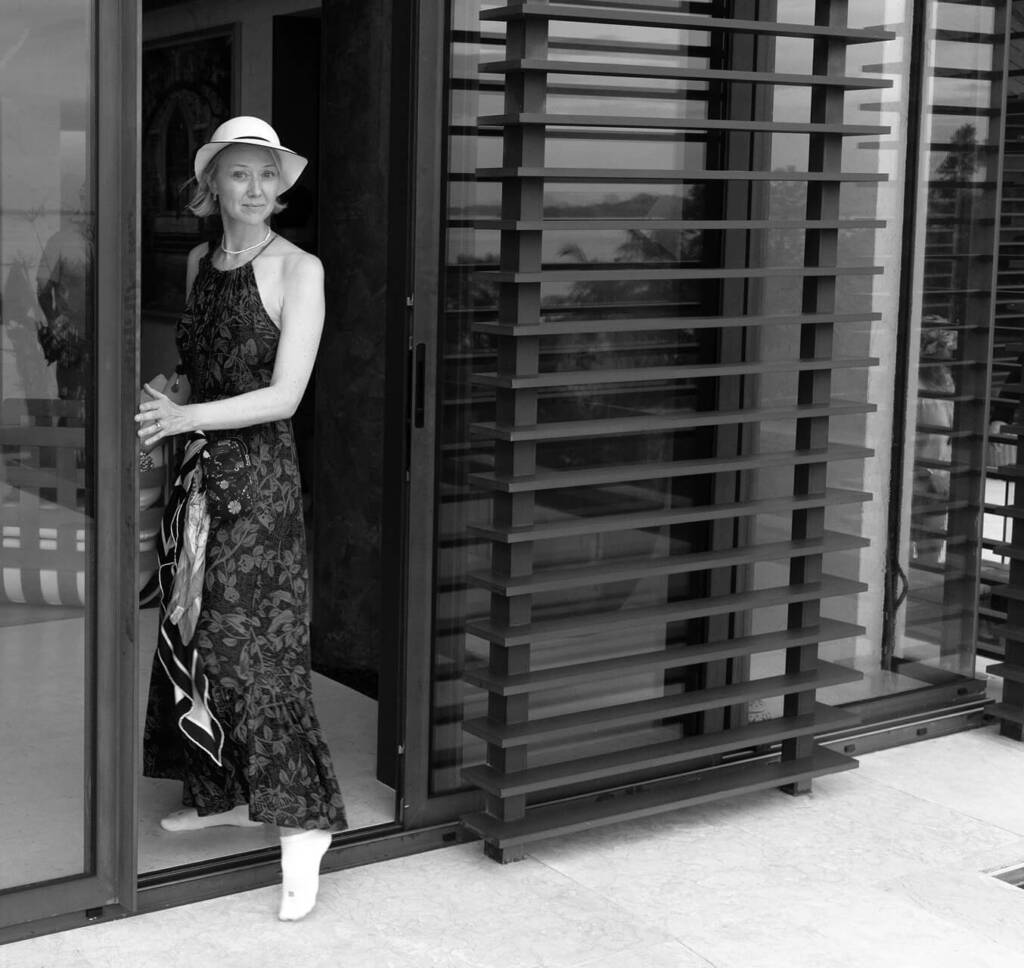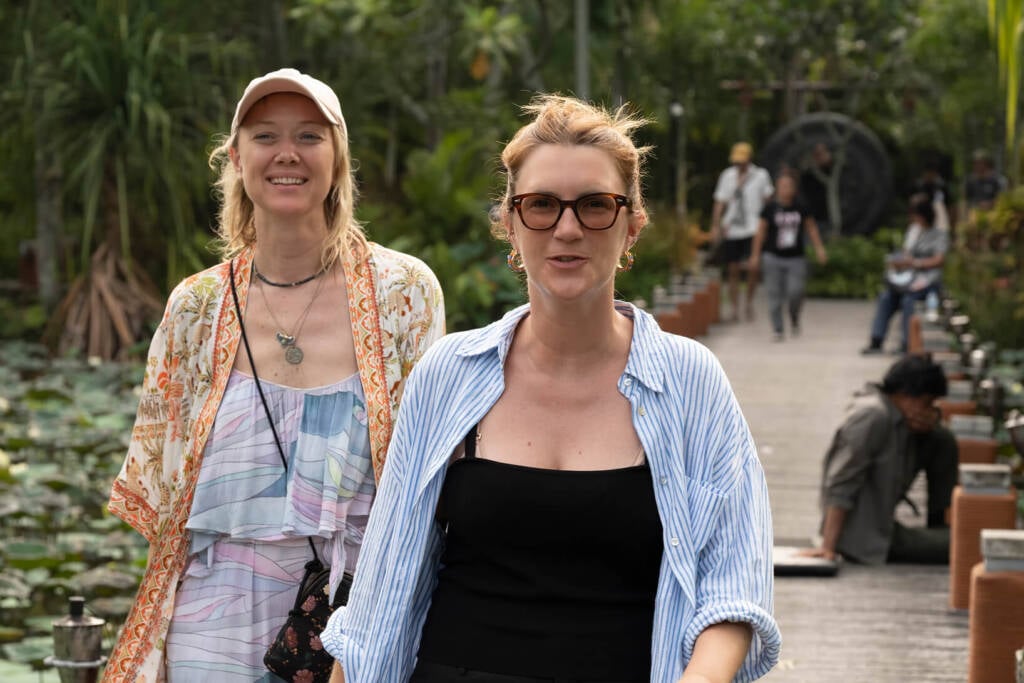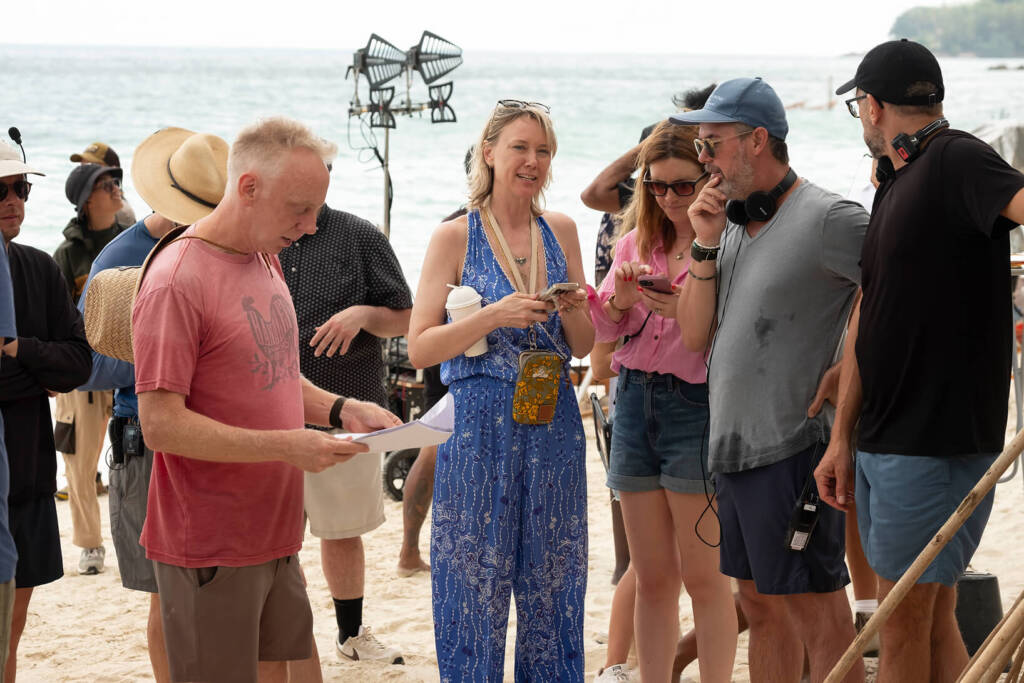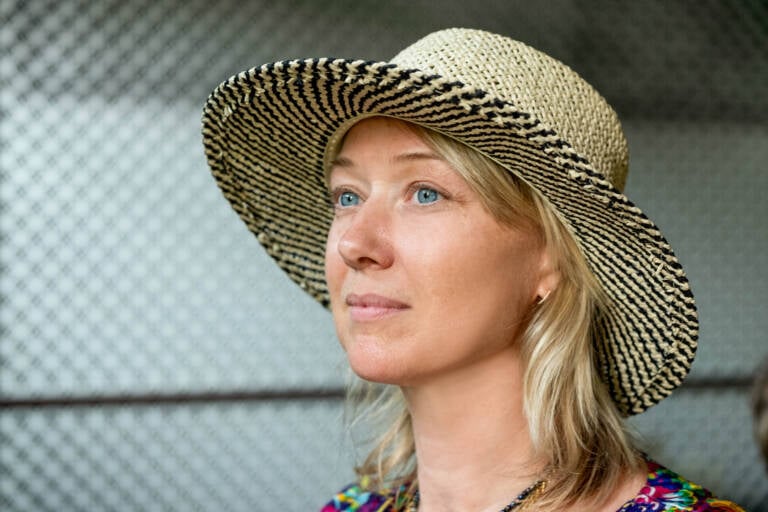


Four-time Emmy nominee and costume designer in film and television of the breakout hit The White Lotus, Alex Bovaird knows the impact of the right outfit. Having been with the show since its first season, Bovaird has designed for the likes of Jennifer Coolidge, Sydney Sweeney, and Walton Goggins—among a long list of others—in varying climates and cultures across three continents, each time building a whole new world to transport the viewer. Having worked on films such as American Honey and Bird, Bovaird has learned the importance of storytelling in costume design, marrying the two so seamlessly that it’s almost unimaginable they were ever apart. Alex sits down with hube to talk about empathy, craft, and where the two meet.
hube: Both costume design and acting require a deep dive into a character’s inner world—a kind of radical empathy. Was this intuitive for you from the start, or did it evolve with time and experience?
Alex Bovaird: The inner world of a character has always intrigued me. Understanding the story—and where the characters intersect with it—is essential to my role as a costume designer. Usually, the thing we have the least of is time, so intuition and speed come in handy. I’m definitely getting better with experience—the more bodies I’ve come to understand, the more resources I have in my mind, and the more tricks of the trade I’ve picked up, making me a stronger collaborator.
h: Clothes often tell the story of who we hope to be, not just who we are. When you build a character’s wardrobe, do you think more about their inner truth—or their self-delusion?
AB: It depends on the character and their relationship to what they wear. Costume design helps tell a story—it signals who this person might be through their clothing. But just like human nature itself, there’s complexity in their choices. First and foremost: where did they get their clothes? What do they have access to? What’s around them? Do they think much about what they’re wearing, or do they not care at all? How were they feeling that particular day—and are their clothes a reflection of that? Are they overcompensating, are they hiding, are they projecting? These are all subtle aspects of mood and identity that get folded into the choices they make.
h: Tell us about creating Chloe’s (Charlotte Le Bon) custom Jacquemus look in the latest season of The White Lotus. How did this dialogue between you, Jacquemus, and the character unfold? Why Jacquemus—what did his aesthetic unlock in Chloe’s story?
AB: I’d followed Jacquemus from the beginning, and the visuals they created through their shows and campaigns always felt to me like a fairytale 1970s dreamscape—whimsical and distant, which aligned perfectly with my inspirations for The White Lotus. My characters’ wardrobes are made up of many different influences and sources. Usually, there isn’t enough time to design specific looks from scratch for individual characters, because you rarely know who the actor will be with enough lead time to develop and produce them.
Season 3 was delayed by the industry strikes, which gave me a rare opportunity to create a capsule wardrobe for a character who was clearly defined on the page—though of course, there was still no guarantee the looks would suit the actress once cast. I sent Jacquemus my mood boards for Chloe and explained her scenes, her nuances, and what I was envisioning. They were huge fans of the show and were thrilled to collaborate, producing something truly special and unique to Chloe.
Using their signature Mediterranean chic as a starting point, we created a bold, elegant, and sexy wardrobe for her—infused with my own sense of tropical cheekiness and tailored to the context of her commanding presence at a five-star luxury hotel. When Charlotte was cast, the clothes were already made—so it was pure luck that they fit her perfectly. The pink look was just one of many great pieces. We always planned to bring it to market, but unfortunately, it didn’t work out.

